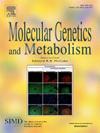Long-term enzyme replacement therapy: Findings from the mucopolysaccharidosis VI clinical surveillance program after 15 years follow-up
IF 3.7
2区 生物学
Q2 ENDOCRINOLOGY & METABOLISM
引用次数: 0
Abstract
Objective
To evaluate the long-term real-world efficacy and safety of galsulfase enzyme replacement therapy (ERT) in patients enrolled in the mucopolysaccharidosis (MPS) VI Clinical Surveillance Program (CSP).
Methods
The CSP collected long-term observational data of routine clinical and laboratory assessments from 30 June 2005 to 01 May 2020. Outcomes included urinary glycosaminoglycan (uGAG) level, 6-min walk test (6MWT), forced expiratory volume in 1 s (FEV1), forced vital capacity (FVC), anthropometrics and adverse events.
Results
The final analysis population included 221 participants with MPS VI; 212 participants received ERT (median ERT exposure time 11.7 years). In ERT-treated participants with both baseline and follow-up data, uGAG levels decreased by a mean of 59.7 % after a mean follow-up of 8.0 years (P < 0.0001; n = 84), 6MWT distance increased by a mean (SE) of 42.3 (21.81) meters after a mean follow-up of 7.0 years (P = 0.0610, n = 35), FEV1 increased by 0.36 (0.098) L after 6.5 years (P = 0.0014, n = 24), and FVC increased by 0.52 (0.143) L after 6.3 years (P = 0.0013, n = 25). Improvements were seen across subgroups of participants with high and low baseline uGAG levels (>200 and ≤ 200 μg/mg creatinine). 6MWT and pulmonary function increased primarily in participants younger than 18 years at baseline while older patients showed stabilization. Galsulfase was generally well tolerated with no new safety signals identified. Most adverse events were MPS-related clinical manifestations and considered not related to galsulfase by investigators.
Conclusions
Data collected in the CSP over 15 years provide real-world evidence for sustained improvements in endurance and pulmonary function among patients with MPS VI treated with ERT, with no new safety concerns identified. These results further support and confirm observations from the clinical trials and previous findings from the CSP.
长期酶替代治疗:粘多糖病VI临床监测项目15年随访后的结果
目的评价半乳糖酶替代疗法(ERT)在粘多糖病(MPS) VI临床监测项目(CSP)患者中的长期疗效和安全性。方法CSP收集2005年6月30日至2020年5月1日的常规临床和实验室评估的长期观察数据。结果包括尿糖胺聚糖(uGAG)水平、6分钟步行试验(6MWT)、1秒用力呼气量(FEV1)、用力肺活量(FVC)、人体测量和不良事件。结果最终分析人群包括221例MPS VI患者;212名参与者接受ERT治疗(ERT暴露时间中位数为11.7年)。在基线和随访数据均接受ert治疗的参与者中,平均随访8.0年后,ugg水平平均下降59.7% (P <;0.0001;n = 84),平均随访7.0年后,6MWT距离平均(SE)增加42.3(21.81)米(P = 0.0610, n = 35), FEV1在随访6.5年后增加0.36 (0.098)L (P = 0.0014, n = 24), FVC在随访6.3年后增加0.52 (0.143)L (P = 0.0013, n = 25)。基线ugg水平高低(≤200 μg/mg和≤200 μg/mg肌酐)的参与者亚组均有改善。6MWT和肺功能在基线时主要在18岁以下的参与者中增加,而老年患者表现稳定。半乳糖硫酶的耐受性一般良好,没有发现新的安全信号。大多数不良事件是mps相关的临床表现,研究者认为与半乳糖酶无关。结论:在CSP中收集的超过15年的数据为接受ERT治疗的MPS VI患者的耐力和肺功能持续改善提供了真实的证据,没有发现新的安全性问题。这些结果进一步支持和证实了临床试验的观察结果和CSP的先前发现。
本文章由计算机程序翻译,如有差异,请以英文原文为准。
求助全文
约1分钟内获得全文
求助全文
来源期刊

Molecular genetics and metabolism
生物-生化与分子生物学
CiteScore
5.90
自引率
7.90%
发文量
621
审稿时长
34 days
期刊介绍:
Molecular Genetics and Metabolism contributes to the understanding of the metabolic and molecular basis of disease. This peer reviewed journal publishes articles describing investigations that use the tools of biochemical genetics and molecular genetics for studies of normal and disease states in humans and animal models.
 求助内容:
求助内容: 应助结果提醒方式:
应助结果提醒方式:


